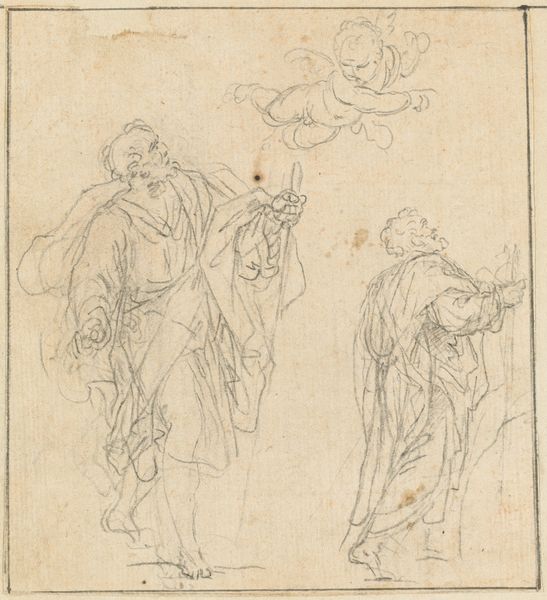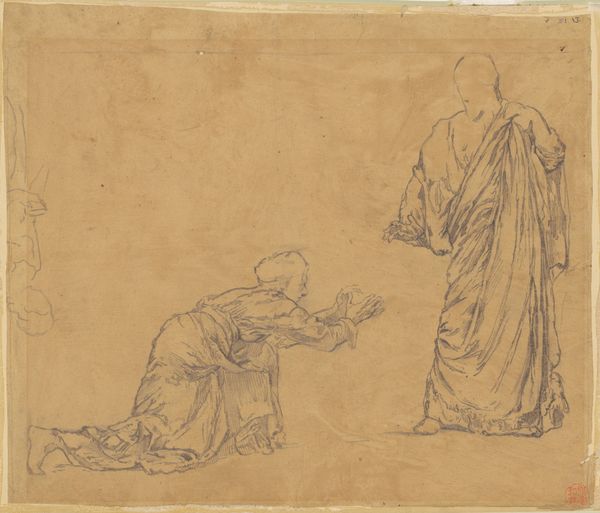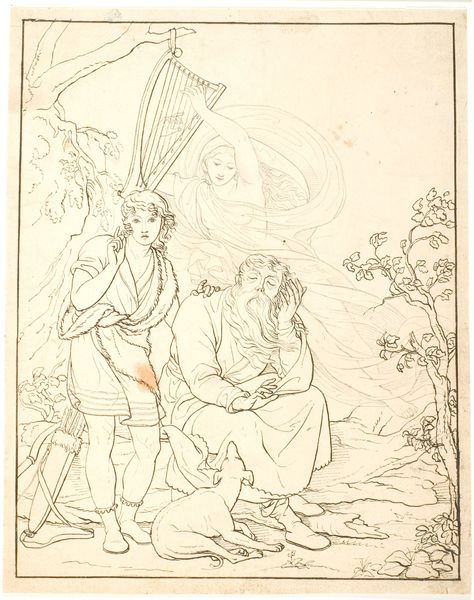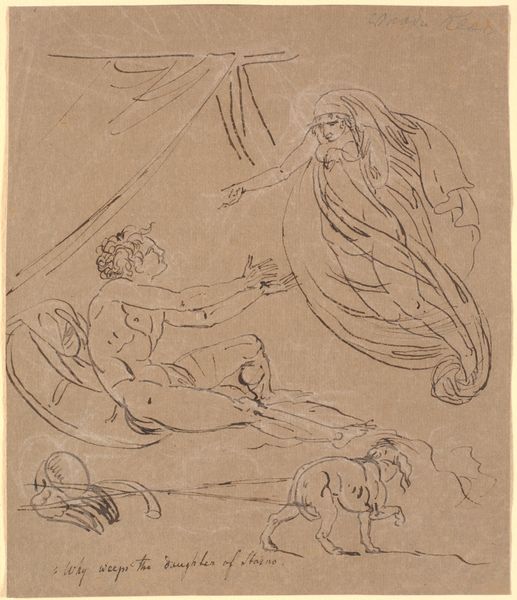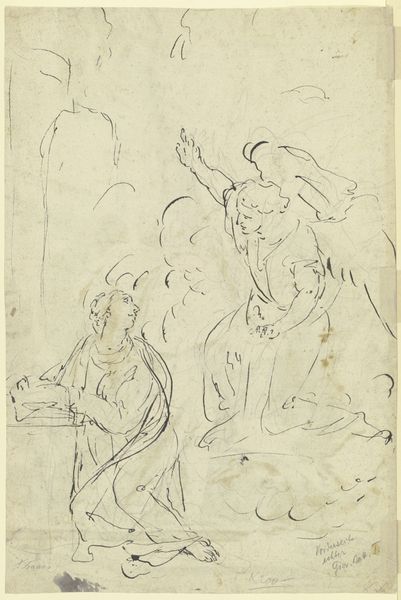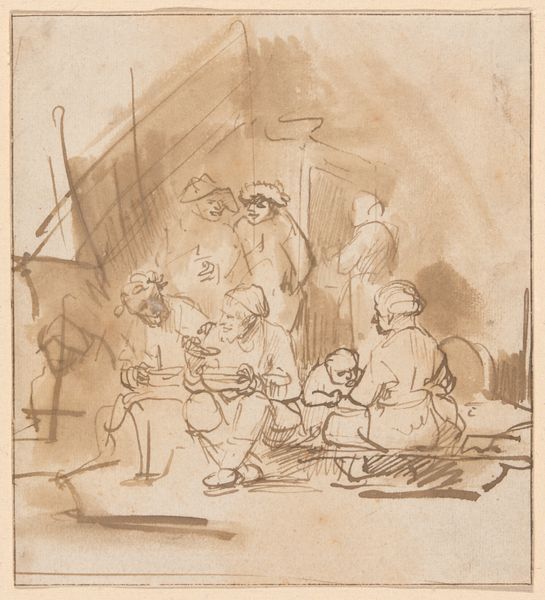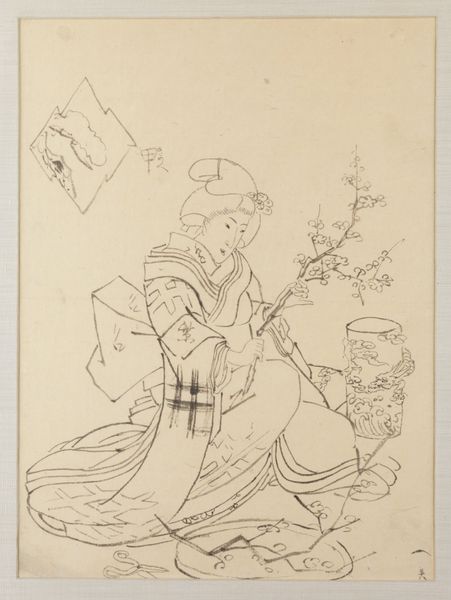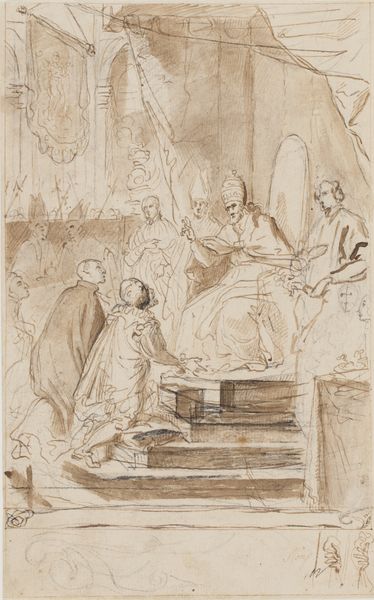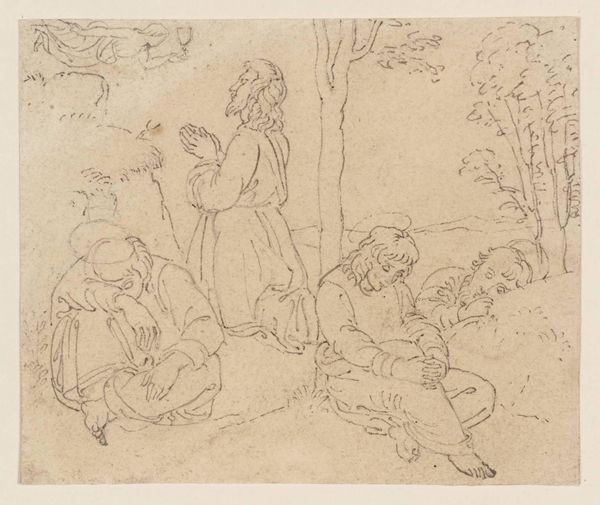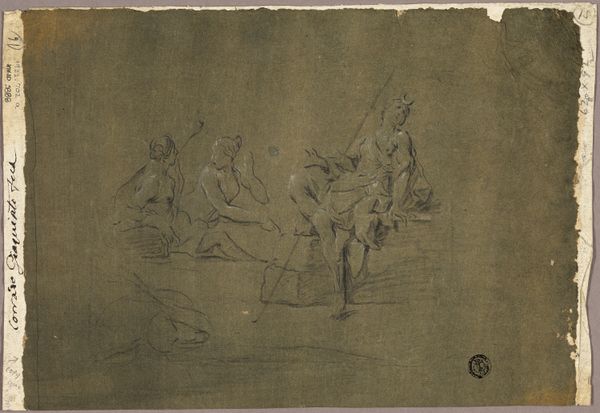
Dimensions: 261 mm (height) x 224 mm (width) (bladmaal)
Curator: Look at the raw emotion conveyed through Nicolai Abildgaard's drawing, “Scene af Ossian; Morna og Duchomar,” created between 1743 and 1809. Abildgaard captures a powerful narrative moment with simple ink lines. Editor: My immediate impression is of high drama, operatic even. The stark contrast between the frantically gesturing woman and the stoic warrior generates a lot of tension within a very spare composition. Curator: Indeed. The scene illustrates an episode from James Macpherson’s "Ossian" poems, a cycle that romanticized ancient Celtic bards. Note how Abildgaard uses line to evoke both raw grief in Morna and the stoicism of Duchomar in the face of battle's grim realities. Editor: The almost brutalist use of line, the way it aggressively scratches across the surface— it almost prefigures Expressionism. There is an angularity, a deliberately unfinished quality, particularly in the background, that adds to the overall unease. Curator: It echoes the anxieties swirling around national identity at the time. Ossian resonated across Europe, speaking to a primal, heroic past. Abildgaard taps into this vein, visualizing the sorrow and honor central to the poems. See, too, the loyal hound, a persistent symbol of fidelity across cultures, reminding us that grief extends beyond the human realm. Editor: Right. The dog acts as a kind of compositional link between Morna's emotional outburst and Duchomar's restrained sorrow, a kind of bridge between interior and exterior states. But also note how the sparse use of detail really focuses the viewer's eye on the narrative figures—all energy and pathos seems concentrated there. Curator: The choice of ink amplifies the starkness, creating a mood perfectly aligned with the tragic narrative. It's an artwork deeply entrenched in Romanticism’s exploration of heightened emotional states. Editor: Absolutely, it underscores the intensity. What’s left with me is this potent interplay of angular forms and flowing lines. It’s surprisingly modern for a work inspired by ancient lore. Curator: For me, Abildgaard has transformed the poem's narrative into something universally human. Editor: Indeed. It becomes an artifact that resonates through the ages.
Comments
No comments
Be the first to comment and join the conversation on the ultimate creative platform.
